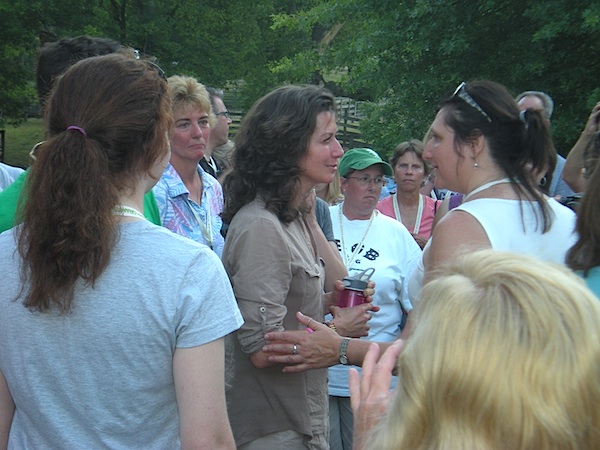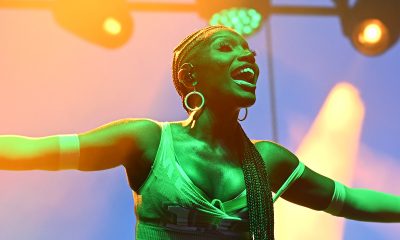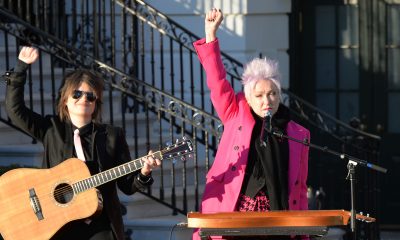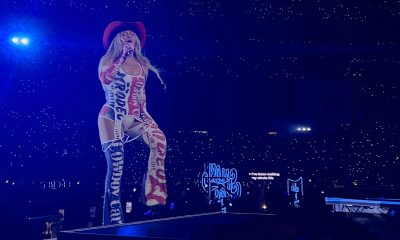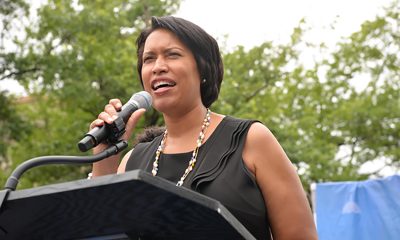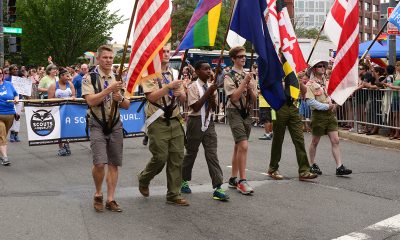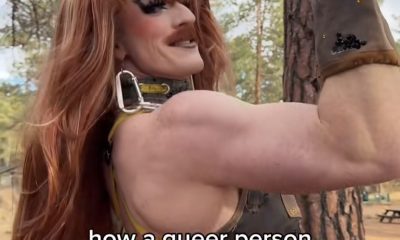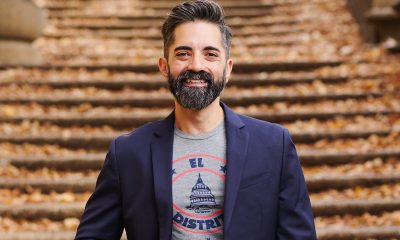Arts & Entertainment
Gays prominent at Amy Grant’s Nashville weekend
Gathering reminds how much is missing of singer’s touring history
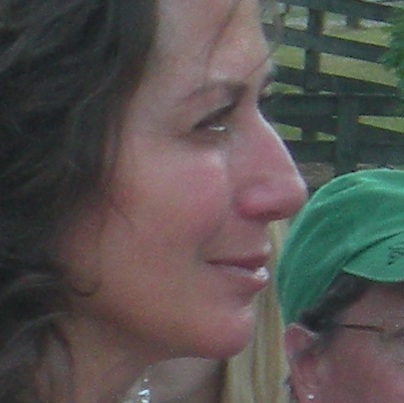
Weekend before last, a friend and I made a road trip to Nashville to spend a weekend with Amy Grant and 550 of her nearest and dearest. It was a great weekend — $50,000 was raised for various charities Grant supports, the music performed (almost all requests) was a long-time fan’s dream come true and the Gospel Music Hall of Famer and six-time Grammy winner was as accessible and approachable as was realistically possible considering those attending were among the all-time die hards, a few of whom had vulture-like tendencies everytime Grant appeared.
That gays — and at least one lesbian couple and one trans woman — were among the group was hardly surprising. We’ve been among the most vocal in her fan circles for years. Most non-church folks remember Grant only for a few early ’90s hits (“Baby Baby,” “Every Heartbeat”). Though her catalog has aged well, she’s not deemed terribly high on the hip quotient. Even one of the charity recipients said, “Amy Grant — isn’t she Vince Gill’s wife?”
But for a generation of gay men who grew up in Baptist and Evangelical churches in the ’80s, Grant was so much more than that and, no exaggeration, a lifeline. Contemporary Christian Music had its own parallel universe divas — Sandi Patty, Twila Paris, Margaret Becker, et. al. — and Grant, who in many ways had and maintains a very non-diva-esque persona, was queen of the lot. But that’s just one of the ironies of Grant’s career — she also stumbled into the music biz without really trying, has always been upfront about her modest pipes (she’s really a better songwriter than singer) and, despite a bounty of RIAA Platinum albums, never fully fit in in either the gospel or pop establishments.
Those of us in fan circles have discussed ad nauseum Grant’s public handling of her gay fans (or lack thereof). She’s warm, friendly, gamely poses for photos with male couples, etc., but is careful never to state her personal feelings one way or the other. One understands to a degree — she’s in a no-win situation. As was obvious from the attendees last weekend, most of Grant’s fans are Gen. X and post-Boomer soccer moms from the Bible belt. We all seem to mix pretty well. I hope they feel the same. But Grant would alienate a large part of her fan base if she were to come out one way or the other on her feelings of the Bible and homosexuality. There’s a clamoring among gay fans, of course, for her to be more unequivocal. Nobody’s expecting Lady Gaga-caliber activism, but heck, even the late Tammy Faye Bakker Messner was more openly gay accepting than Grant. Perhaps, though, having lost everything already, Tammy Faye had nothing left to lose (Tammy Faye even joined us at Capital Pride about 10 years ago …. Ahhhh, Tammy Faye, how I miss thee).
Grant does occasionally take risks — it will undoubtedly seem like a non-issue to many, but monogrammed bottles of Jack Daniels with Amy Grant nameplates were sold for $100 a pop at her farm, which she opened to guests on June 23. It all went to charity but the irony was delicious — I’m old enough to recall the outraged reactions in the ’80s when Grant said in an early interview that she occasionally imbibed. Folks at my parents’ church were apoplectic.
It’s never been a big deal to me, either the booze or the gay stuff. Some fans, so eager to glean the slightest glimmer of acceptance (are we really that desperate for validation?), latched on to an off-the-cuff remark she made during the weekend when a guest southern gospel singer, telling a story about a drag queen who’d parodied his wife, said his group had a large gay following (Grant acknowledged she did as well).
The draws for me have always been Grant’s music and personality. There’s a freshness, a buoyancy, to her music that, though it sounds stylistically dated, never really goes away. It goes back to the first album — lyrics and energetic Brown Bannister production around lines like, “The sun woke me up real early it’s a beautiful morn/so I’m goin’ down to the river to be reborn” still resonate 35 years after they were put down on wax. My parents, both products of stodgy, old school mainline and Roman Catholic versions of Christianity, had early-’70s born again experiences and for them and their fellow Boomers, there was a parallel Jesus music/born again fever sweeping the country the same time Stonewall and the modern gay rights movement was kicking off. This is no coincidence — hippie ideals weren’t sustainable, of course, but what they did bring us was a shucking off of the ’50s mindset on all kinds of issues. In terms of gay stuff, faith, and a whole lot more, this was not your parents’ (my grandparents’) America. Grant got in on sort of the tail end of that but shot off into the stratosphere in the early ’80s. By then, things had calmed down and she became the voice of a churchgoing, Bible Belt generation with songs like “El Shaddai,” “Sing Your Praise to the Lord” and “Thy Word.”
Bored eventually with straight-up gospel, she gradually started flirting with pop music and following a hit No. 1 duet with Peter Cetera in ’87 (“Next Time I Fall”), she had a full-on hit pop album of her own by 1991 (“Heart in Motion”). But she never fully went one way or the other. At the point in which an all-out pop album would have made the most sense — just following the Cetera hit — she went the other direction and made an impressionistic gospel album, “Lead Me On.” Its singles tanked on pop radio but it went onto become her critical peak and has been called (by CCM magazine, et. al.) the best gospel album of all time. Likewise, when “Heart in Motion” was going through the roof a few years later, Grant was careful to let people know she hadn’t sold out as she was so often accused of doing by the hardliners (she gets bonus points, in my opinion, for having been condemned by Jimmy Swaggart). The album closes with the all-out praise song “Hope Set High” (“if there’s anything good that happens in life, it’s from Jesus”), a song she memorably performed last weekend.
So were the young gays of the era, hopelessly stranded in the Bible Belt with no hope of escape until college, just latching on to the closest thing we could get to a lighthouse in Grant? Not really — it’s deeper than that. I and many I know were also listening to Madonna, Janet Jackson, Cyndi Lauper and Tina Turner (we all figured “Private Dancer” was her first album) back then too, even if we had to sneak their tapes into the house. It’s hard to know if Grant meant any of this intentionally or if it was her own way of sneaking in some stuff past the gatekeepers, but there are glimmers of gay hope dotted all throughout her discography from as early as 1980 when she sang the lyrics her then-husband, Gary Chapman, had written (“all I ever have to be is what you made me/any more or less would be a step out of your plan”) to her own lyrics just a year later (“being this person inside of me/unafraid of being me/no more faces to hide behind …/even if I am the only one who wants to fly”) and even much later, with the 2003 song “Out in the Open” (“there is no jury, there is no judge/ready and waiting are the steady arms of love”). If it all sounds vague or like searching for something that’s not there, keep in mind, more often than not, Grant was nearly as subtle with her Christian references. It seems laughable now, but people used to parse her lyric sheets and balk at how few references there were to Jesus and/or God anytime she had a new album out, noting how increasingly infrequent they were becoming.
I don’t particularly care what Grant’s personal views are on homosexuality. Sure, it would be great if she would at least take the Dolly Parton approach to embracing/acknowledging us. Lord knows we need all the help we can get on the LGBT rights front where each step ahead feels like pulling teeth. But conversely, what does it say about us as fans if we need some sort of acknowledgement from our favorite singers? I do get it — when you’ve invested emotionally and financially in a singer/brand who’s meant so much to you, especially during the raw, painful formative years (and let me tell you, it’s lonely being the only gay fish in an evangelical, Bible Belt pond when you’re 13), it means a lot to know those you admire are on board. But as adults, ultimately that need for validation says more about our own desperation than anything it might suggest about Grant. For the record, Sandi Patty, perhaps my other all-time favorite singer, is just as evasive. There are quietly gay people in her camp and she once told a group of gay fans who hosted a tribute post-show event for her in New York that she was “feeling the love,” but she, too, stops short of any condoning type-of statement. They’ll both talk to any small-town newspaper in which they happen to have an upcoming show, yet my Blade interview requests go curiously unacknowledged. Perhaps they feel they’ve already rocked their Christian fan bases enough having spent the last 10-15 years rebuilding after each going through controversial divorces (Sandi’s first husband, John Helvering, and Amy’s, Gary Chapman, were huge parts of their touring entourages in the ’80s; John ran sound for Sandi; Gary was Amy’s band director on several of her biggest tours).
My ultimate frustration with loving these singers falls into a whole other category entirely — to my endless chagrin, whole chapters of their touring history are missing in action. Sure, I love mainstream pop and rock too, but if you’re a Stevie Nicks fan or, merciful heavens, a Tori Amos fan, and you’re willing to look in some, ahem, unofficial places, you can find audio circulating of practically every show they’ve ever done. Same with the Stones, Bob Dylan, Springsteen — all the big dogs you’d expect. Other acts, like Pearl Jam, have recognized the insatiable appetites of their staunchest legions, and have released “official” bootlegs, manna from heaven for those who’ve worn out the studio recordings and spent many hard-earned dollars following them around. Even Cyndi Lauper, who traditionally has varied up her live show way more than, say Madonna or Janet, has a surprisingly rich bevy of fan-generated recordings out there. Different artists have different feelings on this sort of thing (the Grateful Dead famously encouraged it), but the sticking point for many is that it’s OK as long as you don’t attempt to profit off it.
Amy and Sandi both fall into that category — Sandi didn’t even bat an eye when people plunked down camcorders on mini-tripods at a Nashville event she hosted last year — and yet huge swaths of their concert-giving history are unaccounted for. And I’m not talking about obscure stuff, either — tours like Amy’s “Heart in Motion Tour” and Sandi’s “Another Time Another Place Tour” were mammoth operations playing arenas for months on end all around the country 20 years ago. On one hand, it’s not terribly shocking — these are not singers, historically, with wildly inventive bands who shook up their set lists drastically from night to night. However, when 25 years has gone by and you can’t even find a complete set list and no official live album or VHS concert tape was ever released, this brings its own level of frustration. These people have spent half their lives on the road, yet there’s precious little evidence that they’ve even left their living rooms.
Just for the record, my holy grails in this vein are — Sandi: anything pre-’83, the ’84-’85 “From the Heart Tour” (her first cross-country jaunt), the ’91-’92 “Another Time Another Place Tour” or the ’98 “Artist of My Soul”-era dates. For Amy: always wondered how complete the “Age to Age” concert video is — at 90 minutes including Gary’s set, one imagines a few numbers might have ended up on the cutting room floor. Only a handful of individual numbers have ever surfaced from the 18-month-long “Unguarded Tour” — surely somebody taped this at least one night (soundboard tapes were reportedly made each night but have never surfaced in fan circles). Also curiously missing from trading circles is her biggest tour ever — the “Heart in Motion Tour.” Audio has been known to exist, but nobody I’ve ever talked to claims to have it. I’m totally down for a no-profit swap if anybody has any of this stuff.
If there’s an upside to all this, it’s that Amy and Sandi are still out there and active. Patty records regularly and has released an album almost every year of the last decade. Grant only records here and there (she’s reportedly working on a new album), but she tours almost constantly. It’s a blessing I don’t take for granted as a few of my other favorites from the era — Paris and Becker — have, with precious few exceptions, completely stopped recording and touring.
Time to move on and get a life? Yeah, probably, but isn’t it uncanny how deep the nerve is that takes you back to the first music you ever discovered on your own? For me, it defies explanation. And so the quest/obsession continues. I’m even — don’t laugh — planning to check out a D.C. Women of Faith conference in August. Ordinarily I’d rather sit home and watch paint dry (I’ve left much of that theology long behind), but — holy of holies — Amy and Sandi are BOTH scheduled to be there!
Bars & Parties
Impulse Group DC to host fundraiser
Giving Tuesday and Happy Hour held at Thurst Lounge
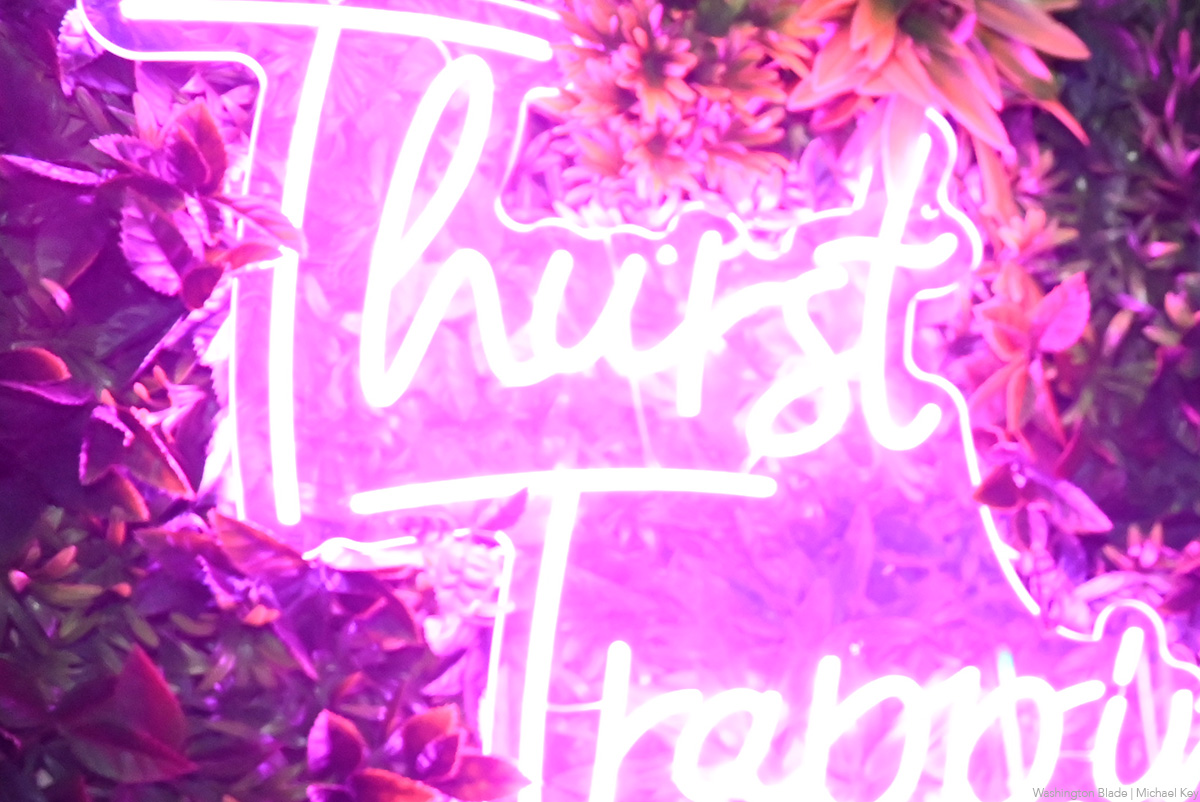
Impulse Group DC, a local advocacy organization, will host “Giving Tuesday and Happy Hour” on Tuesday, Dec. 2 at 6 p.m. at Thurst Lounge.
This event is a special happy hour fundraiser filled with good vibes, great food, and community connection. DJ Obie will be on deck keeping the energy high while you enjoy tacos, cocktails, and the kind of atmosphere only Thurst can deliver.
A portion of every signature cocktail sold goes directly toward supporting Impulse Group D.C.’s work in sexual health, mental health, harm reduction, and social justice for the D.C. community.
Admission is free and more details are available on Eventbrite.
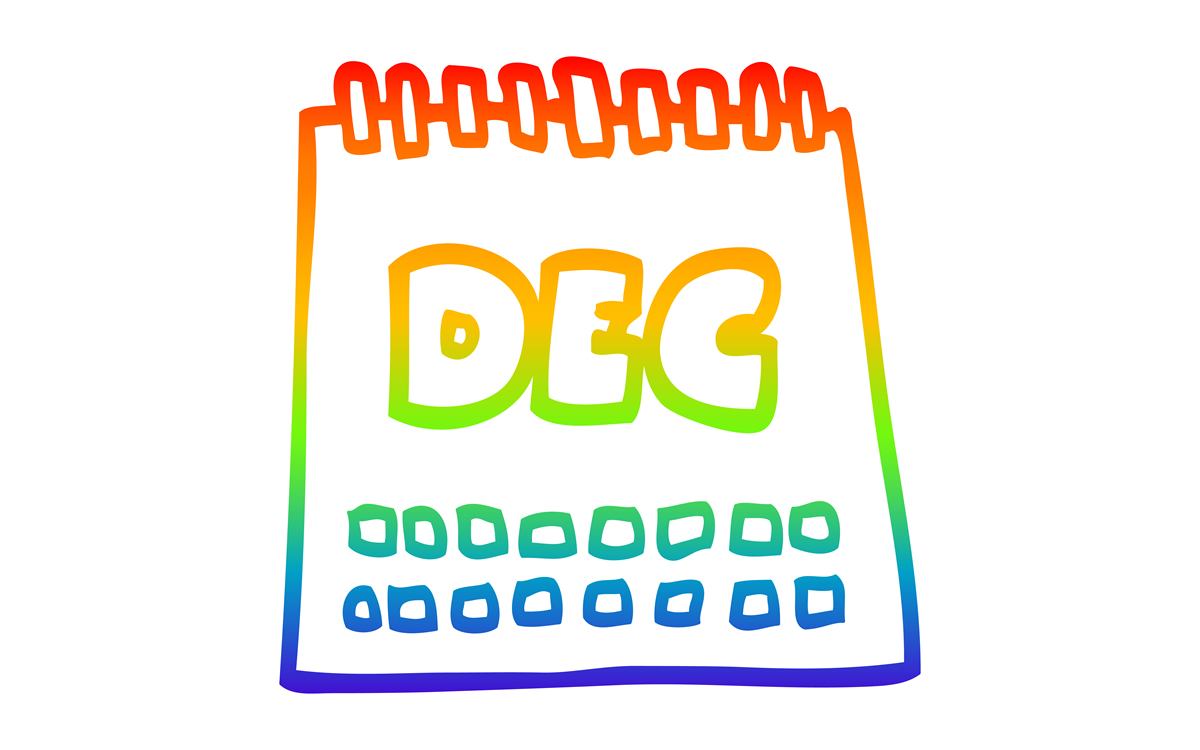
Friday, November 28
“Center Aging Friday Tea Time” will be at 12 p.m. in person at the DC Center for the LGBT Community’s new location at 1827 Wiltberger St., N.W. To RSVP, visit the DC Center’s website or email [email protected].
Go Gay DC will host “LGBTQ+ Community Happy Hour” at 7 p.m. at Dupont Italian Kitchen Bar. This event is ideal for making new friends, professional networking, idea-sharing, and community building. This event is free and more details are available on Eventbrite.
Saturday, November 29
Go Gay DC will host “LGBTQ+ Community Brunch” at 12 p.m. at Freddie’s Beach Bar & Restaurant. This fun weekly event brings the DMV area LGBTQ+ community, including allies, together for delicious food and conversation. Attendance is free and more details are available on Eventbrite.
Sunday, November 30
Go Gay DC will host “LGBTQ+ Coffee and Conversation” at 12 p.m. at As You Are. Guests are encouraged to come and enjoy stimulating conversation. For more details, visit Eventbrite.
Monday, December 1
“Center Aging: Monday Coffee Klatch” will be at 10 a.m. on Zoom. This is a social hour for older LGBTQ adults. Guests are encouraged to bring a beverage of choice. For more information, contact Adam ([email protected]).
“Soulfully Queer: LGBTQ+ Emotional Health and Spirituality Drop-In” will be at 3 p.m. at the DC Center for the LGBT Community. This group will meet weekly for eight weeks, providing a series of drop-in sessions designed to offer a safe, welcoming space for open and respectful conversation. Each session invites participants to explore themes of spirituality, identity, and belonging at their own pace, whether they attend regularly or drop in occasionally. For more details visit the DC Center’s website.
Tuesday, December 2
Universal Pride Meeting will be at 7 p.m. on Zoom. This group seeks to support, educate, empower, and create change for people with disabilities. Email [email protected] with any questions.
Friends of Dorothy Cafe will host “Choose Our Blend” at 6 p.m. at Stardust Vintage & Gift. Guests are encouraged to come sip, sample, and vote on a lineup of custom coffee blends from Rustic Route Coffee Co., a DMV-based queer-owned roaster. Guests’ votes will help Rustic Route choose the café’s official signature roast. Event organizers will take donations, and more details are available on Eventbrite.
Wednesday, December 3
Job Club will be at 6 p.m. on Zoom. This is a weekly job support program to help job entrants and seekers, including the long-term unemployed, improve self-confidence, motivation, resilience and productivity for effective job searches and networking — allowing participants to move away from being merely “applicants” toward being “candidates.” For more information, email [email protected] or visit www.thedccenter.org/careers.
Center Aging Women’s Social Discussion Group will be at 7 p.m. on Zoom. This group is a place where older LGBTQ women can meet and socialize with one another. There will be discussion, activities, and a chance for guests to share what they want future events to include. For more details, email [email protected].
Thursday, December 4
The DC Center’s Fresh Produce Program will be held all day at the DC Center for the LGBT Community. People will be informed on Wednesday at 5 p.m. if they are picked to receive a produce box. No proof of residency or income is required. For more information, email [email protected] or call 202-682-2245.
Virtual Yoga Class will be at 7 p.m. on Zoom. This is a free weekly class focusing on yoga, breathwork, and meditation. For more details, visit the DC Center for the LGBT Community’s website.
API Queer Support Group will be at 7 p.m. on Zoom. This is a support group for the Asian and Pacific Islander Queer Community. For more details, email [email protected].
Theater
D.C. theater scene has something for everyone this holiday season
‘Nutcracker,’ ‘A Christmas Carol,’ and much more
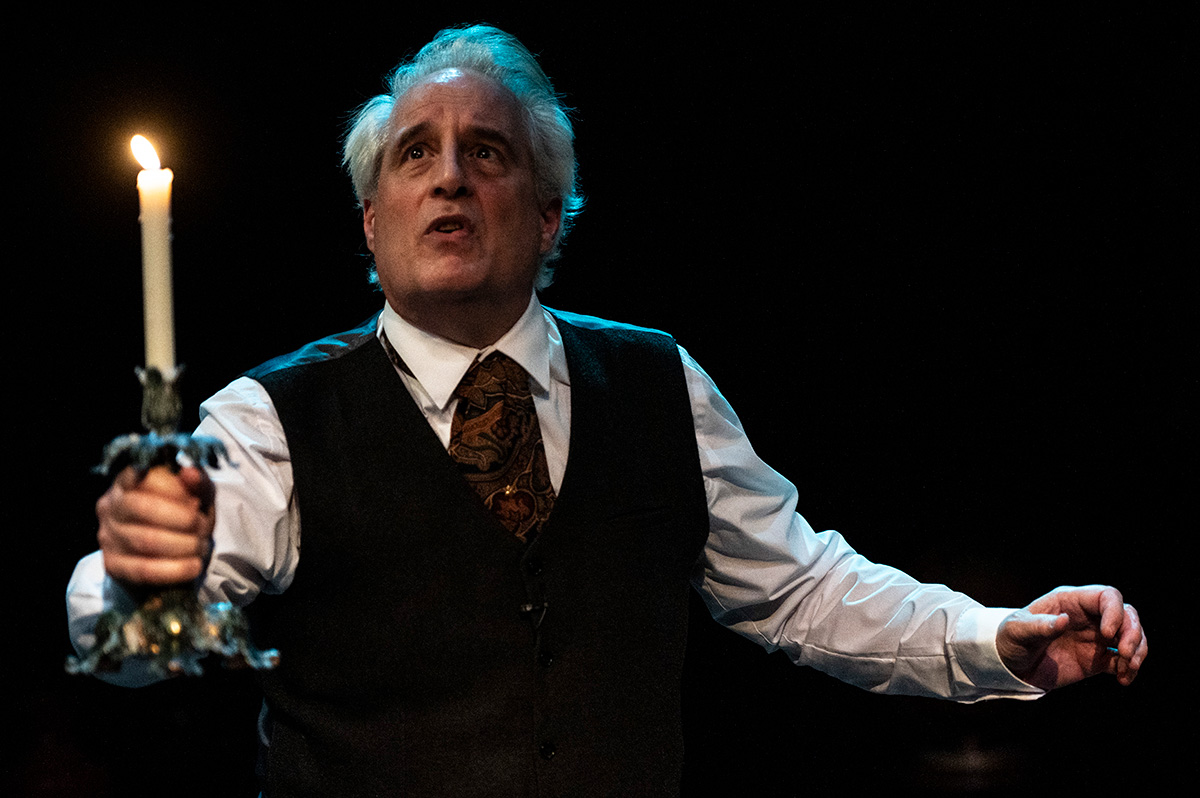
With its familiar music, yuletide imagery, and storytelling, theater can be a big part of the holidays. Add to that making memories and theater tickets wrapped as presents under the tree, and it’s a seasonal no brainer.
Folger Theatre presents “Resplendent Joy: Christmas Traditions from Spain and Portugal” (Dec. 5-14); the marvelous Folger Consort will perform early Spanish Christmas carols and traditional holiday music from early modern Spain and Portugal: folger.edu/resplendent
At Round House Theatre, playwright Sam Holcroft’s “Rules for Living” (Dec. 3-Jan. 4) makes its U.S. premiere. The darkly funny holiday comedy was a hit in London and is now hoping to repeat that success with a version tailored for the states. The seven-person cast includes versatile actors Naomi Jacobson and real-life spouse John Lescault. Ryan Rillette directs. roundhousetheatre.org
Theatre J presents “Chanukah in the Dark” (Dec. 6-21), an hour-long play ideal for ages five and up. “When the lights go out during Chanukah, Max and family begin sharing songs, stories, and traditions — only to discover the lights they needed and the miracles they searched for were in their midst all along.” edcjcc.org
The Cathedral Choral Society’s “Joy of Christmas” (Dec. 13-14) presents a wonderful program of carols and beloved holiday favorites at the festively decorated National Cathedral. The program features Seraph Brass, organist Edward Hewes, Carillonneur Edward M. Nassor, percussionist Mary La Blanc of “The President’s Own” U.S. Marine Band, and the Eastern Concert Choir from Eastern Senior High School. Cathedralchoralsociety.org
With “The Holiday Show,” (Dec. 13, 14, and 20), the Gay Men’s Chorus returns to entertain audiences with its annual and most popular show.
This year the holiday extravaganza is bigger than ever at historic Lincoln Theatre with new, soulful arrangements of favorite holiday carols: “The reindeer will be high-kicking and the snowflakes will sparkle. Songs include “O Holy Night,” “Rudolph the Red Nosed Reindeer,” “Let It Snow,” “We Wish You the Merriest,” and “Go Tell It on the Mountain.’” gmcw.org
At Olney’s intimate Mulitz-Gudelsky Theatre Lab, out actor Michael Russotto is back for the holiday season in his solo show “Christmas Carol: A Ghost Story of Christmas” (through Dec. 28). The talented Russotto portrays nearly 50 different characters from the Charles Dickens classic, that proves “funnier and far more relevant than you might imagine.” Olneytheatre.org
Also on holiday offer in the DMV are a jolly bunch of musical chestnuts as well as reliable Christmas crowd-pleasers.
Included on the roster is Olney Theatre’s production of Jerry Herman’s “Hello, Dolly!” (through Jan. 4) starring the mega-talented Nova Y. Payton. Based on the play “The Matchmaker” by famed gay playwright Thornton Wilder, the musical has proved a vehicle for many a diva including Carol Channing, Pearl Bailey, Bette Midler, and Barbra Streisand. Now Payton dons the mantle and the buzz is good.
Another beloved musical is “Fiddler on the Roof” (through Jan. 25), the story of Tevye, a poor Jewish milkman, his family and their tight-knit community who honor tradition while contending with pogroms in Czarist Russia. Currently being performed intimately in the round at Signature Theatre in Arlington and directed by Joe Calarco, the large cast features actors Douglas Sills, Chrisopher Bloch, and terrific out actor Jake Loewenthal as the poor tailor Motel Kamzoil, all singing Broadway favorites like “Sunrise, Sunset” “If I Were a Rich Man” and “Matchmaker.” sigtheatre.org
At Shakespeare Theatre Company’s Harman Hall is Frank Loesser’s “Guys and Dolls” (through Jan. 4). Based on tales from famed American journalist Damon Runyon, the show focuses on two overlapping love stories set in Depression-era Times Square. The terrific score includes songs like “Luck Be a Lady,” “Sit Down, You’re Rockin’ the Boat,” “A Bushel and a Peck,” and more songs you’ll know. Directed by Francesca Zambello and choreographed by Joshua Bergasse.
The cast includes Julie Benko, Lamont Brown, and Holly Twyford as General Matilda B. Cartwright, which is reason enough to buy a ticket. shakespearetheatre.org
And for hardcore traditionalists there’s the Washington Ballet’s “The Nutcracker” (through Dec. 29) with its balletic magic at the charming gilded Warner Theatre. The beloved production of Tchaikovsky’s ballet, here set in 1882 Georgetown, features a retinue of agile partiers, children, soldiers, rats, and notable figures from American history. washingtonballet.org
And last but hardly least, historic Ford’s Theatre presents “A Christmas Carol” (through Dec. 31), an enduring Washington tradition since I was youngish. Conceived by Michael Baron, this charming Dickens’ moneymaker again spotlights Craig Wallace as miserly Ebenezer Scrooge who after a night of ghostly visits, rediscovers Christmas joy. Fords.org
-

 District of Columbia3 days ago
District of Columbia3 days agoBowser announces she will not seek fourth term as mayor
-

 U.S. Military/Pentagon4 days ago
U.S. Military/Pentagon4 days agoPentagon moves to break with Boy Scouts over LGBTQ and gender inclusion
-

 Drag4 days ago
Drag4 days agoPattie Gonia calls out Hegseth’s anti-LGBTQ policies — while doing better pull-ups
-

 District of Columbia5 days ago
District of Columbia5 days agoSecond gay candidate announces run for Ward 1 D.C. Council seat

